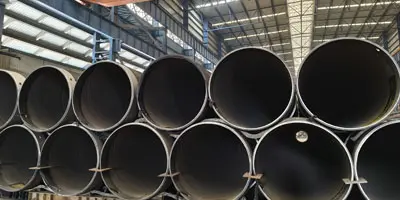In the demanding world of oil and gas drilling and completion operations, ensuring seamless connection compatibility between various downhole components is critical. Differences in thread types, outer diameters, and materials often pose challenges in assembling drill strings, tubing, casing, and tools. This is where Crossover Joints become essential — as key transitional connectors that adapt mismatched components to maintain system integrity, safety, and operational efficiency.This article offers an in-depth exploration of crossover joints, covering their types, materials, standards, typical applications, and best practices for selection and use in oilfield operations.
What is a Crossover?
A crossover sub (commonly called "X-Over") is a mechanical adapter used to connect threaded components with different characteristics. These components might differ in size, thread type, or both. Crossovers are critical in the assembly of drill strings or well completion strings, ensuring compatibility between dissimilar components.
Common Naming Conventions
Crossover joints are commonly described by their thread configurations:
PIN × BOX: Male thread on one end, female thread on the other (most common).
BOX × BOX: Female threads on both ends.
PIN × PIN: Male threads on both ends.
For example, a "3½" IF PIN × 4½" REG BOX" crossover joint connects a 3½-inch IF male thread to a 4½-inch regular female thread.
Applications of Crossovers:
Used to connect casing, tubing, or drill pipe components with varying specifications.
Facilitate transitions between tools or pipes in the string.
Crossover Characteristics:
Constructed as a one-piece tubular section.
Equipped with threaded ends designed for specific sizes or thread types.
Fabricated to meet the strength and durability requirements of the application.
Types and Structural Designs of Crossover Joints
1. By Thread Structure
PIN × BOX: Used to connect two different threaded tubulars; the most frequently used configuration.
BOX × BOX: Connects two male-threaded parts.
PIN × PIN: Connects two female-threaded components.
2. By Application
Drilling Crossover: Connects drill pipes, stabilizers, heavy-weight drill pipes.
Casing/Tubing Crossover: Links different thread types or steel grades in casing and tubing strings.
Completion and Testing Tools Crossover: Connects packers, pressure gauges, and downhole tools.
3. Specialty Designs
Torque Shoulder Enhanced: Provides higher torque capacity for tough drilling conditions.
Non-Magnetic Crossover: Used in logging tools to avoid magnetic interference.
Corrosion-Resistant Liners: For sour gas wells with H₂S/CO₂ exposure.
Fracturing Crossover: Designed for quick coupling during hydraulic fracturing.
Materials and Manufacturing Standards
Common Materials
Crossover joints must withstand high tensile loads, torque, and corrosive environments. Typical materials include:
Carbon Steel: Grades like J55, N80, P110.
Alloy Steel: 4140, 4130, Chrome-Molybdenum steels.
Corrosion-Resistant Alloys: 13Cr stainless steel, Inconel 625 for acid gas wells.
Relevant Standards
API 5CT: Steel grades and thread specs for casing and tubing crossovers.
API 5DP / API 7-1: For drilling tool crossovers.
ISO 11960 / ISO 13679: International standards for tubular connections.
Manufacturer-Specific: Custom threads such as VAM, Tenaris proprietary connections.
Heat Treatment
To ensure durability and mechanical properties, crossover joints undergo:
Normalizing
Quenching and tempering
Surface treatments (phosphating, galvanizing) for corrosion protection
Specifications of Crossover Joints
|
|
|
|
|
1.External thread
2.Reducing coupling
3. Having Good Sealing Property
|
|
|
|
|
|
|
|
|
|
|
|
1. Grade: J55, K55, N80-1, N80-Q, L80, C90, P110
|
|
2. We also supply permium thread products by customer' s request
|
|
3. Size: tubing coupling from 1.9" to 4-1/2" , Casing coupling fro4-1/2" to 13-3/8"
|
|
4. Type: NU, EU(tubing coupling), STC, LC, BTC(casing coupling).
|
|
5. Surface treatment: Whole phosphating, or inside phosphating and outside coating
|
Differences Between Crossover Joints and Subs
Crossover joints are used to connect two pipes or tools with different thread types or sizes, acting as adapters to ensure compatibility between dissimilar connections. Subs, on the other hand, have matching threads on both ends and serve to add specific functions—such as valves, sensors, or length adjustments—to the drill string. Simply put, use crossover joints to bridge thread mismatches, and use subs to add features or extend the drill string length.
|
Feature
|
Crossover Joint
|
Sub
|
|
Thread type
|
Different threads on each end
|
Same or compatible threads on both ends
|
|
Primary use
|
Connect incompatible components
|
Add function or length to drill string
|
|
Typical length
|
1–5 ft (0.3–1.5 m)
|
1–10 ft (0.3–3 m)
|
|
Material
|
High-grade, sometimes corrosion-resistant
|
Matches string material or special alloys
|
|
Common risks
|
Thread damage from mismatch
|
Valve failure, erosion, or wear in ports
|






 English
English Español
Español بالعربية
بالعربية










 Phone :
Phone :  Whatsapp :
Whatsapp :  Email :
Email : 


